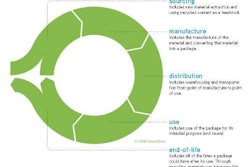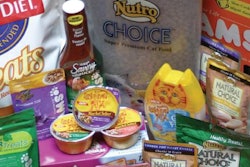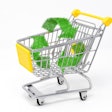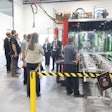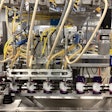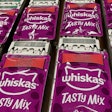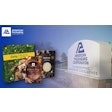
Over the past year, there seems to be a growing stream of price-increase announcements from petfood packagers, suppliers and retailers. As raw material and transportation costs have edged up, the industry has been forced to increase its prices to keep up with the accelerating costs of production-cost-push inflation in which the cost of packaging spirals upward and eventually trickles all the way through the chain to consumers.
Hill's Science Diet raised its price several times over 2008, and a 7.4% jump came in January 2009. Nutro boosted its price 26% in three phases since fall 2007 while the company reduced bag sizes. The price increases have come more often and in larger amounts than previous years, pet store owners say, according to an article in The Record , a newspaper in Bergen County, New Jersey, USA.
The price hikes affect virtually all petfood and treat packaging materials, including film, label, adhesives and inks. These are exactly the kind of events that can inspire structural changes in our industry:
- Excess packaging and production waste are being attacked;
- Companies clamor for innovations that make their processes more efficient; and
- Manufacturers need to develop new strategies when purchasing raw materials and developing packaging.
Reduce waste, reduce price
The key to successful petfood packaging is to select the package material and design that best satisfy competing needs with regard to product characteristics, marketing considerations (including distribution needs and consumer needs), environmental and waste management issues and cost. Not only is balancing so many factors difficult, but it requires a different analysis for each product, considering factors such as the properties of the packaging material, the type of petfood to be packaged, possible petfood/package interactions, the intended market for the product and costs related to the package throughout the production and distribution process.
Packaging technology must balance petfood protection with other issues, including:
- Energy and material costs;
- Heightened social and environmental consciousness; and
- Regulations on pollutants and disposal of waste.
Source reduction encompasses using less packaging, designing products to last longer and reusing products and materials, according to Food Packaging-Roles, Materials and Environmental Issues . Specific ways to achieve source reduction include lightweighting-using thinner gauges of packaging materials either by reducing the amount used or by using alternate materials-purchasing durable goods, purchasing larger sizes (which use less packaging per unit volume) or refillable containers and selecting toxic-free products.
Technology for an economical transition
Zip-Pak has launched the TopZip Jr. retrofit system to help ease some of the packaging line pain. The new technology is economical, upgradable and has a smaller footprint than traditional stand-alone zipper applicators, Zip-Pak says. This enables companies with varying resources to provide brand-differentiating resealable packaging, according to Zip-Pak.
Traditional zipper attachment systems often require too large an investment for companies in emerging markets, or those that have recently purchased non-resealable vertical form/fill/seal equipment. The TopZip Jr. was designed as a baseline version, but is upgradable to run at higher speeds and with a wide variety of pouch formats and zipper profiles, states the company. The upgrades enable Zip-Pak to offer a highly tailored solution with a low capital investment. The system is ideal for applications that can be a challenge to store conveniently, or keep fresh.
The TopZip Jr. applies press-to-close, and can support pillow, block-bottom, quad-seal and stand-up pouches. Additional upgrades include perforation and ultrasonic sealing. The technology can run anywhere from 30 bags per minute without ultrasonics to 100 bags per minute, depending on the upgrade options.
Cutting color and costs
Using a color-harmonization program called Project Rainbow, Unilever is reducing the more than 100 hues it currently uses on its European packaging to just six. The company's hope is to save tens or eventually even hundreds of millions of dollars a year. According to Advertising Age , if the rest of the petfood packaging industry followed suit, billions could be saved.
LFH, the branding and design group behind the switch, said the initial savings for Unilever in Europe amount to US$13 million to US$26 million. According to LFH, other package-goods companies have begun to express interest, and said savings from color reduction could be applied to other areas of marketing as well.
Taking the cost on packaging aesthetics into consideration, the current economic climate makes a few less blues and reds seem a far more attractive option. Advancements in printing, which have added as many as four additional colors to the old four-color process, have helped make such moves possible, reducing the needs for specialized or "spot" colors to get the right look.
Cost savings and waste reduction, according to Graham Hawkins, production director of LFH, come from buying inks on a greater scale, creating far less ink and packaging waste in the process of doing changeovers and producing final packaging. Reduced complexity can improve quality and consistency.


.png?auto=format%2Ccompress&fit=crop&h=167&q=70&w=250)
